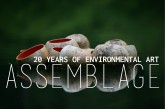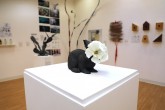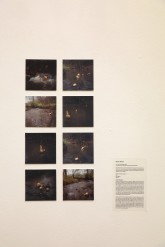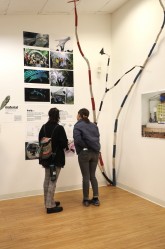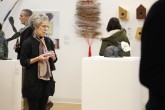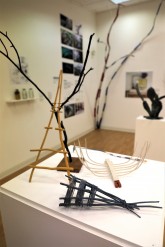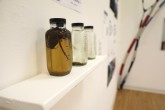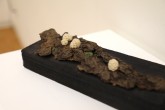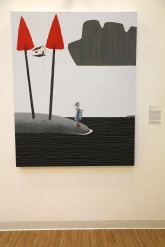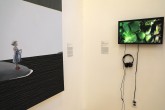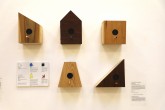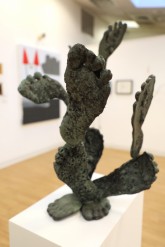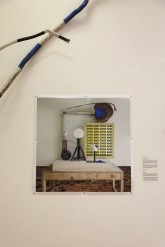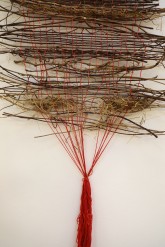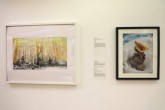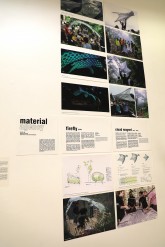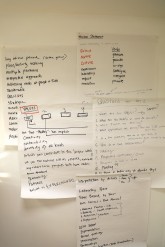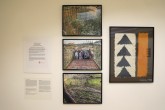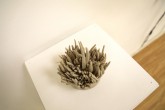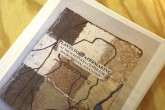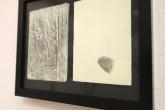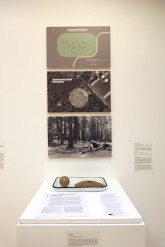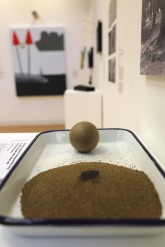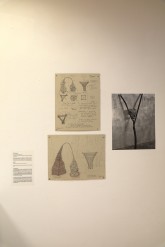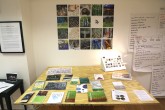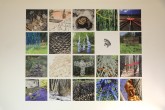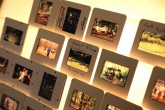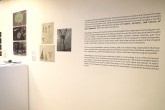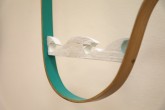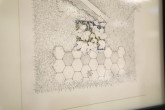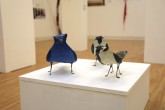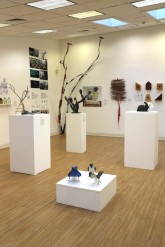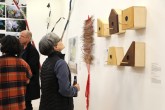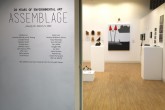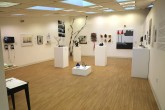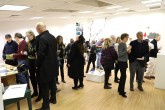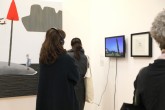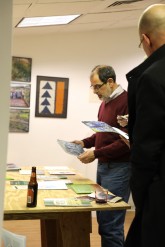Assemblage: 20 Years of Environmental Art at the Schuylkill Center
January 30 – March 21, 2020
Opening reception at the Schuylkill Center on January 30, 7-9pm (details)
Participating Artists:
Bill Botzow, Lorenzo Buffa, Carolyn Hesse, Maddie Hewitt, Brooke Hine, Jennifer Hynes, Jane Ingram Allen, Ellie Irons, Darla Jackson, Sarah Kaizar, Stacy Levy, Melissa Maddonni Haims, Mary Mattingly, Gina Michaels, Gary Miller, Maggie Mills, Jan Mun, Katie Murken (pictured), Rashida Ng, Kaitlin Pomerantz, Jennie Thwing, and WE THE WEEDS
“The biggest thing I’ve learned from nature is the importance of relationships. An ecosystem isn’t just a list of living things (squirrel, tree, bee, flower); it’s the set of relationships *between* those living things (the squirrel lives *in* the tree, the bee *pollinates* the flower). In terms of organizing, this means that a given social movement isn’t a list of organizations, or campaigns, or even individuals; it’s the set of relationships *between* organizations, campaigns, individuals…”
– Farhad Ebrahimi, from Emergent Strategy, by adrienne maree brown
Founded in 2000 as an opportunity for artists and audiences to explore and interpret the natural world and current ecological issues, our environmental art program has brought hundreds of artists to the Schuylkill Center to present contemporary art work in the gallery and on our trails. 2020 is the 20th anniversary of the art program, and this exhibition acknowledged and celebrated the links of the past, present, and future of environmental art in this land, and beyond.
Assemblage: 20 Years of Environmental Art at the Schuylkill Center celebrated the art program’s history by inviting selected previously exhibiting artists to revisit the work they did at the Schuylkill Center, and looked to the future of environmental art with new artists exploring related themes. Partially a retrospective, Assemblage displayed artifacts, records, sketches, and more from the Schuylkill Center archives to reveal aspects of the art program’s history and growth. We also invited select past artists to show newer works that related to their projects at the Schuylkill Center, charting the evolution in their own practices connected to the environment.
The epigraph above was written in the context of organizing for social change, but we can easily apply it to environmental art. The list is long of exhibitions and artists and projects and staff and collaborating organizations that have been involved at the Schuylkill Center since the art program was founded here in 2000, but the connections *between* these individuals, artworks, projects, organizations, and the Schuylkill Center’s land is what has made the program possible.
“Assemblage” is a term with uses in the fields of both art and ecology. In art, it refers to three-dimensional works of art made by intentionally grouping found or otherwise unrelated objects. In ecology, an assemblage of species is a group of organisms that co-occur in the same space and interact through various relationships. In assembling the items currently in this gallery, we sought to reflect the richness of the assemblage of artists and artworks in the Schuylkill Center’s environmental art program, and what it may generate that we can’t yet foresee.
Support for this exhibition has been provided by the Joseph Robert Foundation.
Environmental Art Program History
In 1999, the Schuylkill Center had just completed its first 10-year master plan, with the recommendation that the Center diversify its programming to bring in new audiences. With that goal in mind, renowned curator Mary Salvante approached the director at the time and proposed an art program as a strategy for attracting new visitors, rightly recognizing the rich potential of the Schuylkill Center site as inspiration for artists, and art as a pathway to support the organization’s mission. The program began at a small scale with exhibitions in the Visitor Center gallery (which at the time consisted of two walls in the lobby, where the gift shop is now), while putting together grant applications for funding of larger initiatives such as an artists-in-residence program and outdoor temporary art exhibitions.
Over time, the environmental art program has grown to be one of the Schuylkill Center’s four core program areas, and one of the most unique and ambitious art programs based at a nature center nationally. The goals of the program have expanded to align not only with the Schuylkill Center’s educational goals, but its land stewardship goals. Recognizing the potential of art to actually help solve ecological challenges, the program started focusing more on active projects in the landscape, such as launching our LandLab residency, which tasks artists with collaborating with scientists and our staff to create installations that benefit the land, or prevent or remediate environmental damage. In 2012, we built a larger, more defined gallery space to allow for more ambitious indoor exhibitions. All told, over 350 artists that have participated in over 70 exhibitions and projects since the program’s inception.

